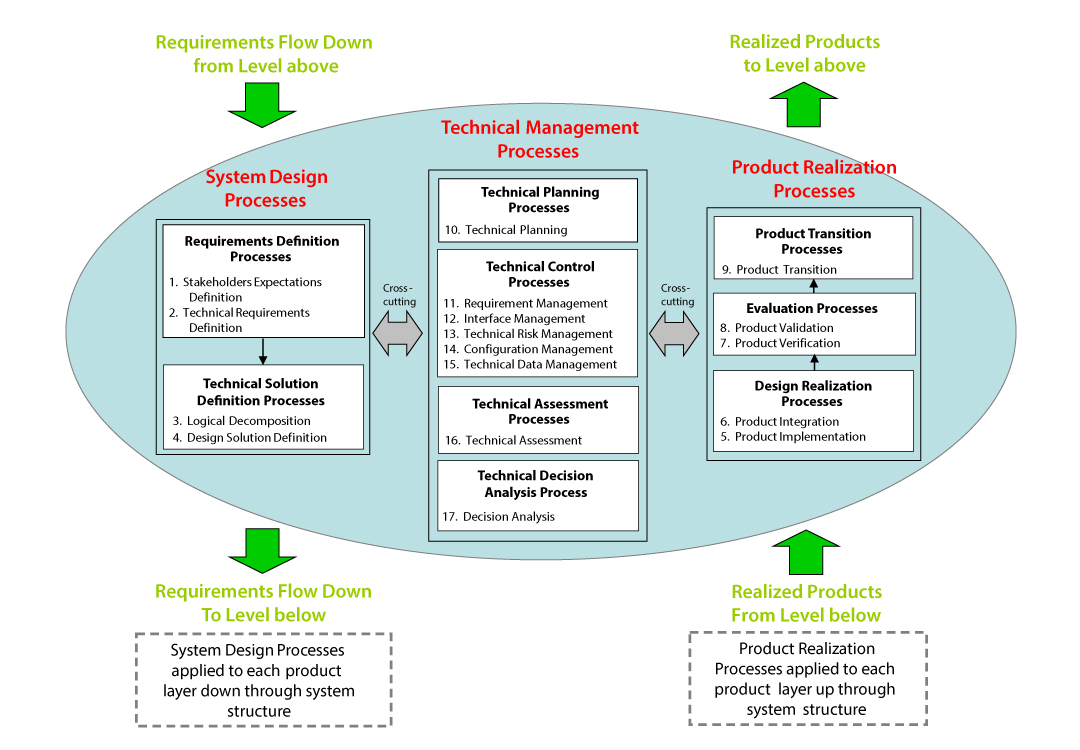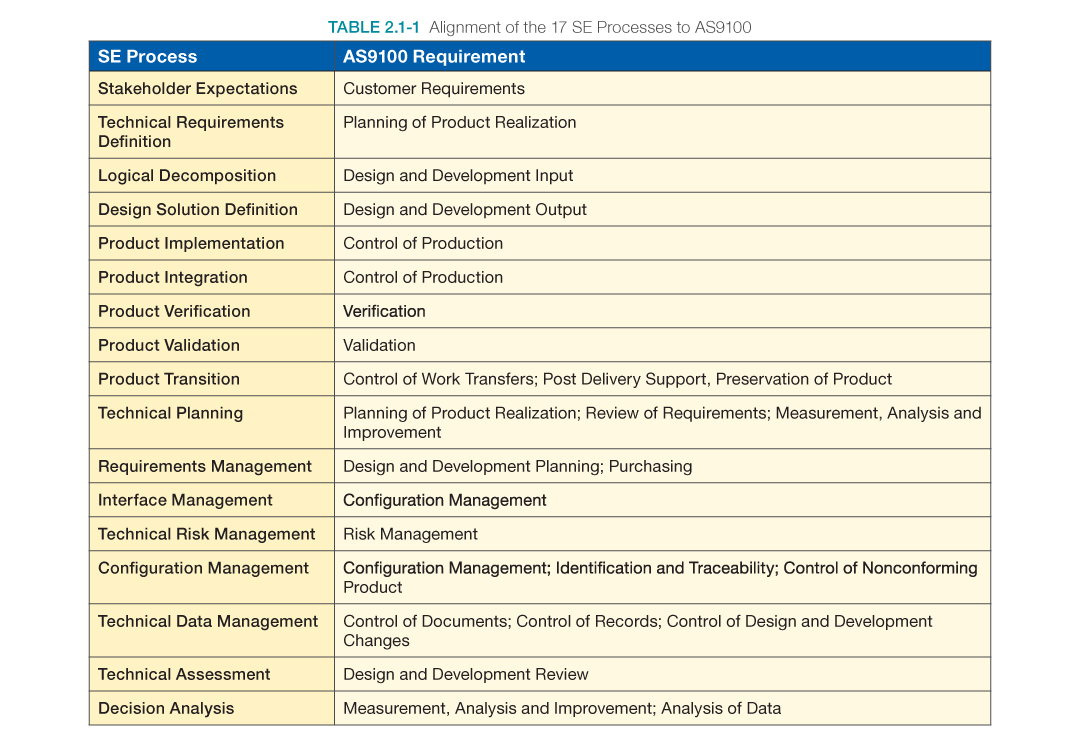2.1 The Common Technical Processes and the SE Engine
There are three sets of common technical processes in NPR 7123.1, NASA Systems Engineering Processes and Requirements: system design, product realization, and technical management. The processes in each set and their interactions and flows are illustrated by the NPR systems engineering “engine” shown in Figure 2.1-1. The processes of the SE engine are used to develop and realize the end products. This chapter provides the application context of the 17 common technical processes required in NPR7123.1. The system design processes, the product realization processes, and the technical management processes are discussed in more detail in Chapters 4.0, 5.0, and 6.0, respectively. Processes 1 through 9 indicated in Figure 2.1-1 represent the tasks in the execution of a project. Processes 10 through 17 are crosscutting tools for carrying out the processes.
- System Design Processes: The four system design processes shown in Figure 2.1-1 are used to define and baseline stakeholder expectations, generate and baseline technical requirements, decompose the requirements into logical and behavioral models, and convert the technical requirements into a design solution that will satisfy the baselined stakeholder expectations. These processes are applied to each product of the system structure from the top of the structure to the bottom until the lowest products in any system structure branch are defined to the point where they can be built, bought, or reused. All other products in the system structure are realized by implementation or integration.
- Product Realization Processes: The product realization processes are applied to each operational/mission product in the system structure starting from the lowest level product and working up to higher level integrated products. These processes are used to create the design solution for each product (through buying, coding, building, or reusing) and to verify, validate, and transition up to the next hierarchical level those products that satisfy their design solutions and meet stakeholder expectations as a function of the applicable life cycle phase.
- Technical Management Processes: The technical management processes are used to establish and evolve technical plans for the project, to manage communication across interfaces, to assess progress against the plans and requirements for the system products or services, to control technical execution of the project through to completion, and to aid in the decision-making process.
The processes within the SE engine are used both iteratively and recursively. As defined in NPR 7123.1, “iterative” is the “application of a process to the same product or set of products to correct a discovered discrepancy or other variation from requirements,” whereas “recursive” is defined as adding value to the system “by the repeated application of processes to design next lower layer system products or to realize next upper layer end products within the system structure. This also applies to repeating application of the same processes to the system structure in the next life cycle phase to mature the system definition and satisfy phase success criteria.” The technical processes are applied recursively and iteratively to break down the initializing concepts of the system to a level of detail concrete enough that the technical team can implement a product from the information. Then the processes are applied recursively and iteratively to integrate the smallest product into greater and larger systems until the whole of the system or product has been assembled, verified, validated, and transitioned.
For a detailed example of how the SE Engine could be used, refer to the NASA Expanded Guidance for SE document at https://nen.nasa.gov/web/se/doc-repository.
AS9100 is a widely adopted and standardized quality management system developed for the commercial aerospace industry. Some NASA Centers have chosen to certify to the AS9100 quality system and may require their contractors to follow NPR 7123.1. Table 2.1-1 shows how the 17 NASA SE processes align with AS9100.





























